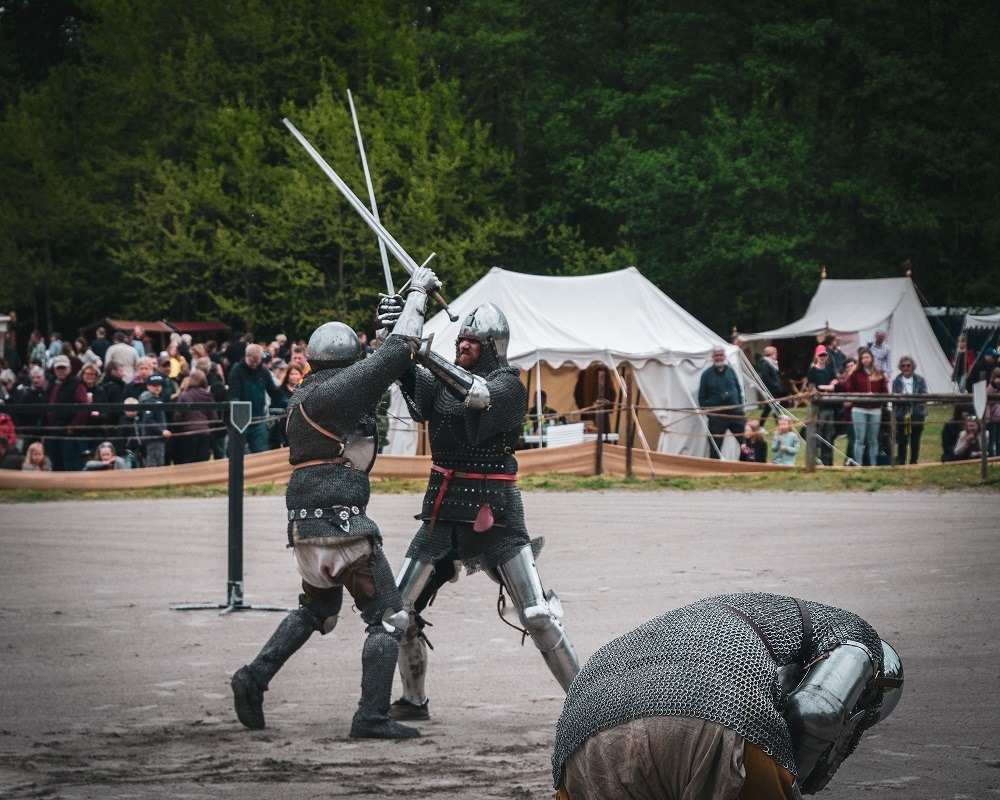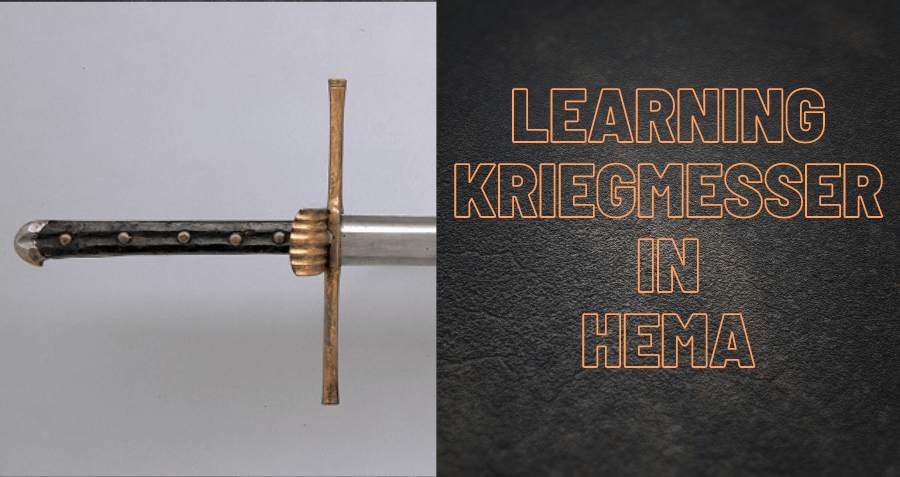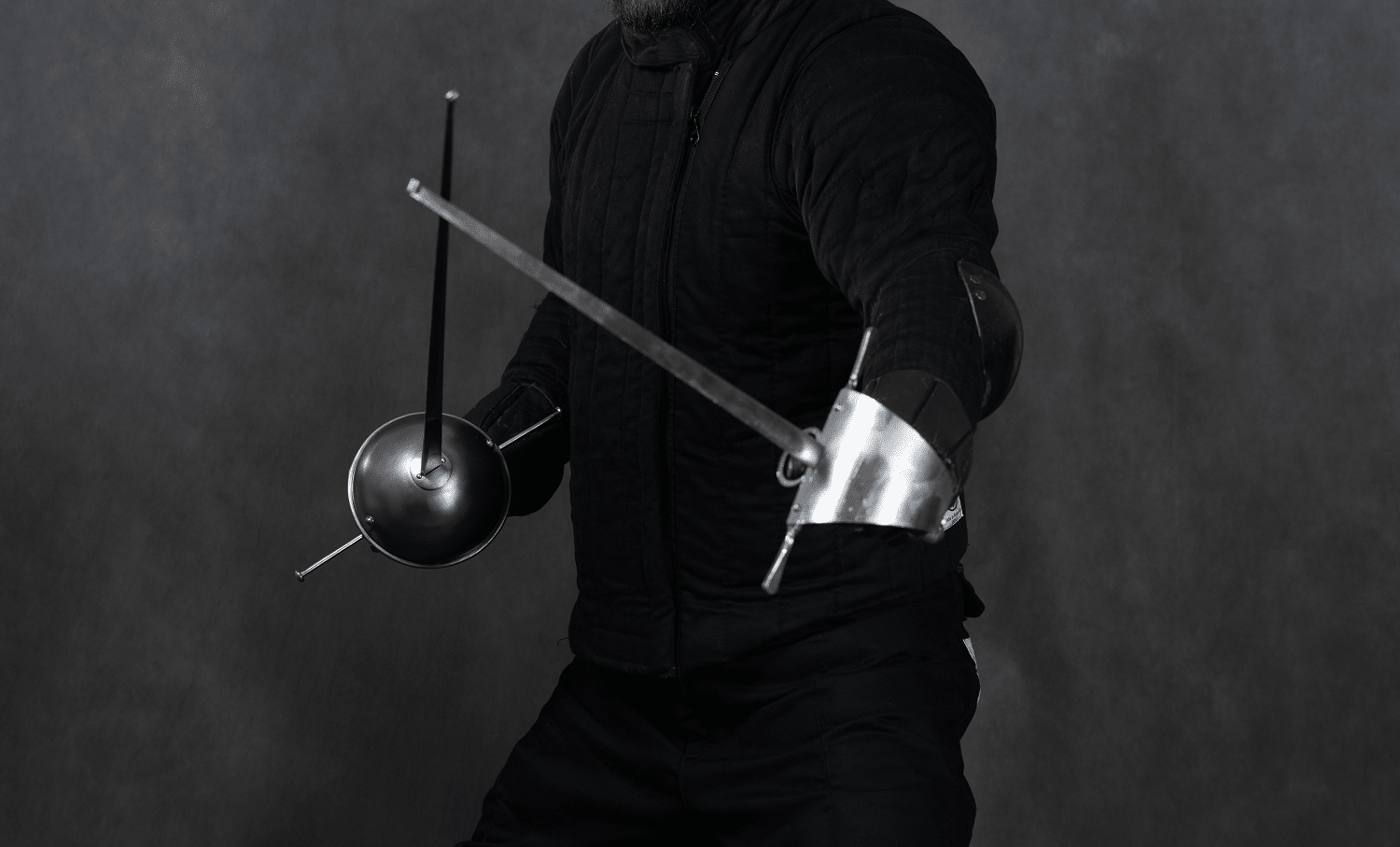A common question that beginners in HEMA have is how much time it takes to learn sword fighting and to perform at a relatively high degree of skill. There are some within the HEMA community who claim it takes many years to become skilled, but this is not necessarily true. The most challenging aspect to answering this question is that different types of people are more or less athletic, and athletic ability has a direct correlation to new skill acquisition in the martial arts; more athletic people who have a stronger mind-body connection can pickup and learn new martial arts much faster than less athletic people can.
Another issue complicating the time assessment is that it’s only been within the last 20 years that complete systems of reconstruction have existed for Historical European martial arts; many people gauge how long it takes to become “good” at sword fighting based on their overall careers spanning to the days when not as much information on how to perform these techniques existed, and had to be reconstructed through trial and error. Presently, there are several popular interpretations of many swordsmanship styles that are widely practiced and taught, so it is much easier to learn HEMA today than it was even a decade ago. With a complete system to learn a student can therefore learn much faster, since they don’t have to create a brand new interpretation of the source material manuscripts from scratch.
How Long Does It Take to Become “Good” At Sword Fighting?
Generally speaking it does not take as long as you might assume. Similar to studying other martial arts such as Modern Olympic Fencing and Kendo, after roughly 6 months of consistent weekly practice a new student will be ready to participate in full contact sword fighting tournaments. How well the student performs at these tournaments will depend greatly on how much skill they obtained and the skill level of the other competitors. As HEMA tournaments generally doesn’t attract the caliber of athletes that more organized sports do, it is still possible for novices to do well at these tournaments. The event categories are rarely broken down by skill level and experience as more organized combat arts might, so there is great opportunity for people to test their sword fighting skills against a wide range of opponents of different backgrounds and skill levels.
Having given this estimated time of 6 months to be sufficiently good at sword fighting to be able to participate in HEMA tournaments with a chance to win matches against other competitors, it is important to understand context of what this 6 months actually means. This 6 month term assumes that the student is seriously studying and training at least three times a week for that 6 month period, for at least 2 or 3 hours each session.
Generally it takes roughly 40 hours to learn the basic fundamentals of sword fighting and perform novice and intermediate level drills. It takes another 60 hours to become very proficient at ingraining these drills into your muscle memory, and then additional hours to effortlessly perform these techniques in a pressure tested environment such as a full contact, high intensity swordfighting tournament setting.
There are many HEMA clubs that only meet once a week for an hour or two at most, and so these clubs generally do not produce very skilled sword fighters as the number of hours that is necessary to become very skilled cannot be obtained within a 6 month period. However there are also very well organized clubs that do offer classes every day of the week, sometimes offering many hours worth of classes per day. Choosing a club that offers many training hours per week and attending these classes regularly as often as you can will shorten the time it takes to become very good at sword fighting, if that is your goal.
As for how long it takes to ‘master’ sword fighting, that is more difficult to answer. While there are many functional reconstructions of these ancient martial arts that have been brought to life again, very few people have obtained the skill level with all of the techniques within these systems to be considered ‘masters’ of these systems. Most HEMA martial art styles such as Armizare and Kunst des Fechtens involve learning to use several different types of weapons in addition to grappling; mastering all of these weapons is something not everyone sets out to do. Even fewer people study the mounted combat sections of these arts. Many HEMA clubs only focus on one weapon type, such as the longsword or the rapier or the sabre, as an example, and don’t cross-train the full range of weapons within the arts they study. This means there is less opportunities for people to be regarded as having ‘mastered’ these systems in their entirety. Generally speaking however, mastery of these systems is feasible within a few years of dedicated study, if someone decided to do this. Yet as mentioned before, most people only focus on learning one or two weapons, and don’t study the full range of weapons within their arts, so it is hard to consider them a master of a style when they have not mastered all of the techniques within that style.
More advice that is useful for beginners to HEMA can be read in our Guides section of this website.
****
If you’d like to learn more information about historical fencing practices please check out our Learn HEMA page for a guide to learning about the historical weapon that interests you. You can also find more guides we’ve written about other topics at our Helpful Guides page. You can also join the conversation at our forums or our Facebook Group community.


















4 Responses
This was most informative and gave me a sense of confidence about starting my hobby with the resources on this site. Thank you!
Interesting. I’m looking into studying a Tai Chi sword form